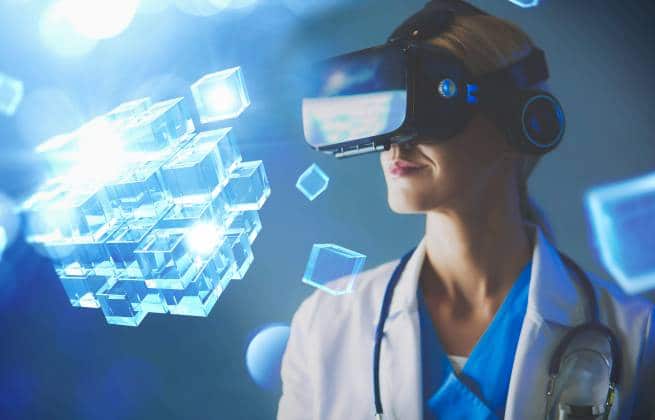The explosion of augmented reality (AR) and virtual reality (VR) technology in recent years, especially as entertainment, has been an exciting trend to follow. AR is the augmentation of real places and situations with a virtual component, and is fast becoming part of everyday life. VR is the creation of a new reality with sensory data transmitted through special hardware, and can seem like something out of a science fiction novel.
While AR and VR technologies for gaming and social media certainly do present new avenues for fun, more and more industries are realizing their commercial and scientific potential. The medical industry is no different, and leading-edge companies are already taking their products and prototypes on the road. These technologies are creating new learning opportunities and changing established workflows – while making waves at product expos and live demonstrations. Here are some of the ways that AR and VR are changing how organizations and health care professionals approach medicine:
AR
AR-enabled glasses that display patient information are a great example of how AR can help HCPs. Instead of relying on tablets and clunky terminals, it’s becoming increasingly likely that most clinicians will turn to a highly portable, hands-free approach. The companies that sell these devices cite some amazing functionality: assistance with IV placement and blood draws, gesture-based technology for recording files or accessing new information, portable ultrasound display and more. As demand increases for these lightweight and portable technologies, it will be especially important to have a trusted source for medical-grade custom cases that are durable enough for frequent use. At Custom Case Group, we have experience in creating cases for the most delicate and sensitive medical devices, so we’re up to the challenge.
VR
VR technologies typically have a more substantial hardware component than AR. In the case of VR headsets, they usually work in tandem with other devices to define an area of VR that you can move in and act upon with a controller or tool. All of this is powered by sensor technology. Instead of overlaying data on visuals you’re already seeing, VR has the potential to make you see and hear a world that’s entirely unreal. Because the reality that’s shown is only limited by processing power and imagination, amazing things are possible – like seeing someone’s veins as you’re practicing a sensitive operation, or seeing someone’s heart as you perform CPR. This has enormous potential in health care education, an angle many health care training and simulation companies are already capitalizing on.
The complexity of VR systems makes them especially tricky to transport. Components that range from small plastic controllers to unwieldy simulation mannequins pack very differently from one another. These systems can also be time-consuming to set up. When paired with a waterproof plastic case, a custom foam interior with a thoughtfully designed layout can do wonders to protect VR systems and facilitate easy packing and unpacking when on the go.
These new technological modalities are highly portable and will continue to grow in importance in medical practices. We’ll ensure that you can travel with and ship these fragile items safely – so that they can keep helping save lives.


